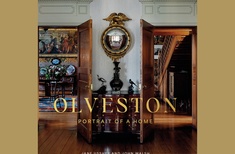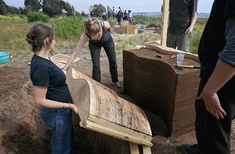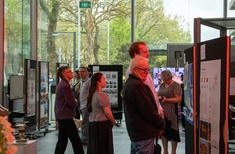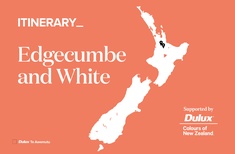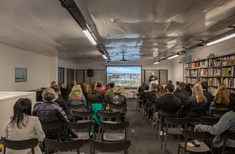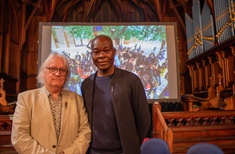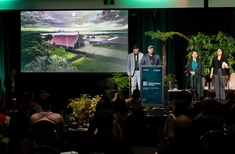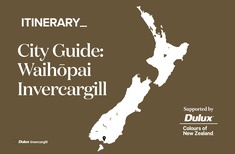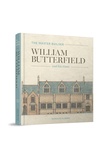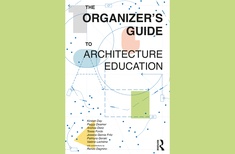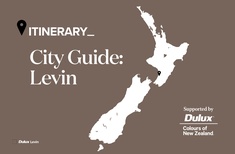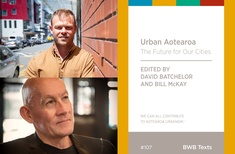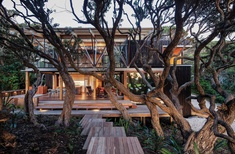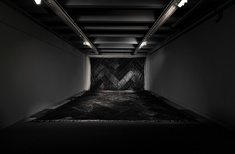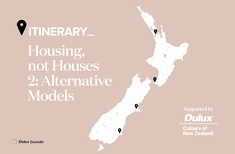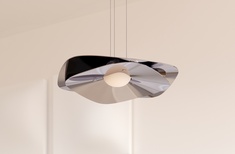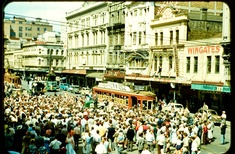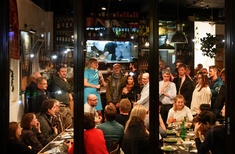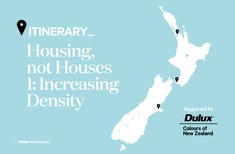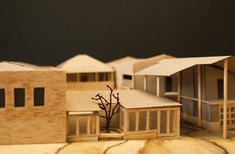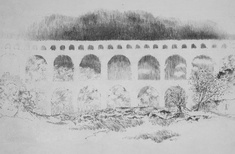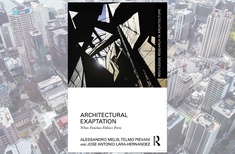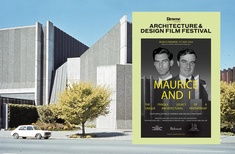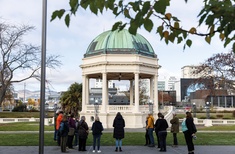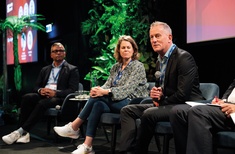Review
RSSIn this Itinerary, supported by Dulux Colours of New Zealand, Andrew Barrie and Maya Haydock highlight 14 Porirua buildings.
Graeme Burgess discusses the book Olveston: Portrait of a home, a collaboration between photographer Jane Ussher and writer John Walsh.
Mark Leong reflects on Francis Kéré’s recent Futuna lecture series in Aotearoa and the ways in which simplicity, innovation and participation underpin his design philosophy.
Aotearoa’s pre:fab took part in this year’s Venice Architecture Biennale, highlighting their work with Andrés Garcés and Rodrigo Daine from Chile.
In part three of a four-part series, see the lectures, workshops and networking events attended by the award-winning writer, architectural graduate and past UoA representative for SANNZ, Sahil Tiku.
In this Itinerary, supported by Dulux Colours of New Zealand, Matt Grant tours 15 projects designed by the architecture firm Edgecumbe and White that have shaped Hamilton’s growth.
Iva Parapunova of Stack Interiors,discusses the complex ideas surrounding biophilia raised at the Inaugural Aotearoa Biophilic Event in September that was made up of a series of discussions, panels and presentations from leading designers.
In part two of a four-part series, see the lectures, workshops and networking events attended by the award-winning writer, architectural graduate and past UoA representative for SANNZ, Sahil Tiku.
In this four-part series, award-winning writer, architectural graduate and past UoA representative for SANNZ, Sahil Tiku, journeys through the Aotearoa Festival of Architecture. Taking in lectures, debates, open studios, exhibitions and more.
Anthony Vile attended the annual Green Property Summit, which focused on the challenges, opportunities and positive outcomes generated on both sides of the Tasman.
The Building Nations 2025 event set out to lift our sights, plan for the long term, and bring all sectors of the industry together to deliver that vision. Anthony Vile reviews the summit.
In this Itinerary, supported by Dulux Colours of New Zealand, Andrew Barrie tours 14 resilient buildings in Waihōpai Invercargill.
In this Itinerary, supported by Dulux Colours of New Zealand, Matt Grant sees 13 significant projects in agricultural regions by the Hamilton firm Angus, Flood & Griffiths.
Ian Lochhead reviews Nicholas Olsberg’s new book on the famed 19th-century architect William Butterfield.
Architect Charissa Snijders reports on the Environmental Defence Society’s (EDS) landmark 2025 Dollars and Sense Conference held earlier this month.
Elisapeta Heta reviews Building an archive of Indigenous architecture: Joar Nango and collaborators, a powerful reclamation of space.
Lynda Simmons reviews The Organizer’s Guide to Architecture Education, a book aimed at students, educators and practitioners insistent on change.
In this Itinerary, supported by Dulux Colours of New Zealand, Andrew Barrie tours 14 resilient buildings in Levin.
Design studio Walker & Bing applies a fine art discipline to its textile design projects. We look at the studio’s Fez Collection collaboration with Dilana Rugs and how storytelling is woven into each unique piece.
In this Itinerary, supported by Dulux Colours of New Zealand, Andrew Barrie highlights 14 projects with significant ties to New Zealand’s sporting culture.
Patrick Sherwood finds the recently released film to be disappointingly light on Brutalism but full of promise and complexity.
Karamia Müller sees Urban Aotearoa: The Future for Our Cities by David Batchelor and Bill McKay, as a thought-provoking exploration of New Zealand’s urban landscapes.
Sean Flanagan reviews Herbst Architects’ recently published monograph of key works authored by John Walsh and finds it “an elegant record of a highly awarded practice”.
Simon Twose visits two architectural exhibitions at Wellington’s Te Pataka Toi Gallery 13 July–22 September 2024 and finds a curation of multiple exchanges.
In this month’s Itinerary, supported by Dulux Colours of New Zealand, Julia Gatley and Andrew Barrie examine 14 alternative approaches to apartment buildings.
An informative and entertaining ‘open source’ book doubles as a reference document for tradies, educators, students and prospective homeowners.
Nightworks Studio, bespoke lighting specialists in Ōtautahi Christchurch, tell us how they landed on the exaggerated gentility embodied in the design of its new La~De~Da Pendant.
Annabelle Smith reviews the ‘The Great Debate’, part of 2024’s Aotearoa Festival of Architecture, where wine was poured while a motion was raised: “Queen Street must evolve!”
Anthony Hōete believes podcasts such as Negroni Talks are an instrumental design resource, where candid architectural discourse generates new waves of thinking.
In this month’s Itinerary, supported by Dulux Colours of New Zealand, Julia Gatley and Andrew Barrie examine 14 enduring apartment buildings from across the country.
Sahil Tiku reviews the week-long exhibition Our Asymmetric City in Auckland, a challenging studio project that warranted “dynamic, responsive schemes”.
Leading sustainability strategist Rebecca Mills provides key takeaways from the WGIC held in Auckland on September 3–4 and attended by over 600 delegates.
University of Auckland School of Architecture student Donna Luo considers our responsibilities with regard to the land on which we live.
A new student-led publication behind the skin shines a light on the thoughts of a generation of architecture students whose collective experiences have been nothing but the norm.
As New Zealand CBDs evolve post-pandemic, repurposing old or empty spaces should be on the drawing board writes Jose Antonio Lara-Hernandez, co-author of new book.
Andrew Barrie and Audrey Lam profile fourteen notable buildings in Whanganui, a city that has served as something of an incubator for architectural talent over the centuries.
Bronwen Kerr reviews Monica Barham So You’re Building: You and the Architect, an exhibition running from 11 May–16 June 2024 at He Waka Tuia, Invercargill.
Julia Gatley reviews Maurice and I, directed by Rick Harvie and Jane Mahoney.
Architectural graduate Fritha Powell finds the continuing tradition of Open Christchurch both progressive and inspiring, with examples offering valuable lessons for the future.
Annabelle Smith gains insight into the challenges ahead for sustainable construction at the 2024 Housing Summit.


